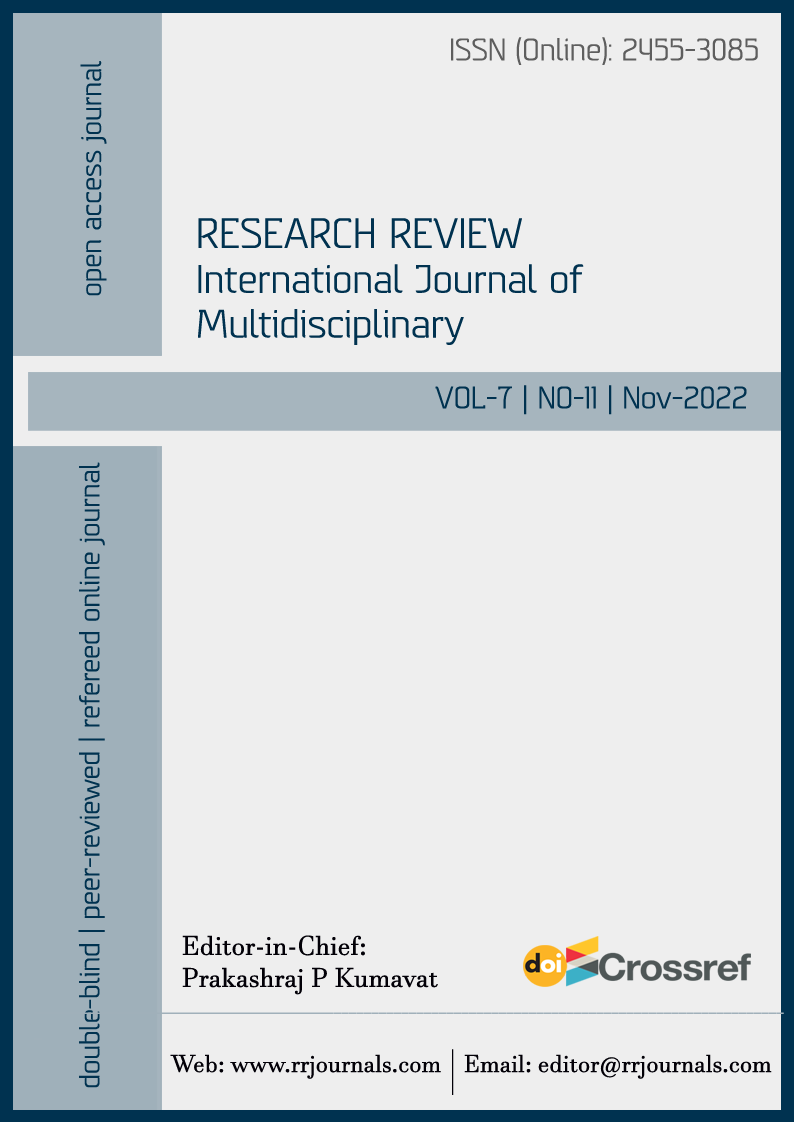Nature and Problems of the Feudal System in the Mughal Period: General Analysis
मुगल काल में सामंतीय व्यवस्था का स्वरूप एवं समस्याएँ: सामान्य विश्लेषण
DOI:
https://doi.org/10.31305/rrijm.2022.v07.i11.015Keywords:
Mughal, Samant, Social, Financial, ChallengesAbstract
A large part of the production of most areas of the country was fraudulently appropriated by the feudal class. It would be very interesting to know how much of this they spent on the interests of their ruled classes. Although it is very difficult to get the information that how much money he used to spend on works for the welfare of the subjects, how much he gave in the treasury and how much he used to keep for creation, but something can be said about his works for public welfare. Each Mughal vassal had a semi-autonomous government of his own, consisting of his troops, subordinate officers, domestic staff, harem, servants and dependents. After fulfilling the obligations towards the Mughal emperor, they were free to spend their income according to the feudatories or other types of obligations. Wasn't interested either. The main reason for this is considered to be the royalty law (Snu and Mebbimanj). According to this law, after the death of the feudatories, all their property was deposited in the royal treasury. For this reason, the Mughal feudal lords were more interested in spending money instead of hoarding it. Only a few among the Mughal nobles had invested a part of their income in various kinds of enterprises. During the rule of Jahangir and Shah Jahan, Asaf Khan had accumulated immense wealth only because of his commercial interest.” Being an influential and close relative of both the emperors, he did not fear much for the safety of his wealth.
Abstract in Hindi Language:
देश के अधिकांश क्षेत्रों के उत्पादन का एक बहुत बड़ा भाग सामंत वर्ग कपटपूर्वक हस्तगत कर लेता था। यह ज्ञात करना बहुत रोचक होगा कि इसमें से कितना वे अपने शासित वर्ग के हितों पर व्यय करते थे। यद्यपि यह जानकारी प्राप्त करना अत्यन्त कठिन है कि वे प्रजा के हित के कार्यों पर कितना धन व्यय करते कितना खजाने में देते और कितना रचय के लिए रख लेते थे किन्तु उनके सार्वजनिक कल्याण के कार्यों के सम्बंध में कुछ तो कहा ही जा सकता है।‘‘ प्रत्येक मुगल सामंत की अपनी निजी एक अर्धस्वायत्त सरकार होती थी, जिसमें उनकी सैनिक टुकड़ी, अधीनस्थ अधिकारी घरेलू कर्मचारी, हरम, नौकर तथा आश्रित वर्ग सम्मिलित थे। मुगल सम्राट के प्रति दायित्व पूर्ति के बाद सामंतों या अन्य प्रकार के दायित्वों की पूर्ति के पश्चात् वे अपनी आय को अपने हिसाब से खर्च करने के लिए स्वतंत्र थे।‘‘ कुछ इतिहासकारों का यह मत है कि मुगलकालीन सामंत वर्ग में बचत के प्रति थोड़ी सी भी रूचि नहीं थी। इसका प्रमुख कारण राजगामिता कानून (Law of Escheat) को माना जाता है। इस कानून के अनुसार सामंतों की मृत्यु के पश्चात् उनकी सारी सम्पत्ति शाही खजाने में जमा कर दी जाती थी। इसी कारण से मुगल सामंतों में धन जमा करने के स्थान पर उसको खर्च करने में अधिक रूचि थी। मुगल अमीरों में कुछ ही लोगों ने अपनी आय का भाग विभिन्न प्रकार के उद्यमों में लगाया था। जहाँगीर एवं शाहजहाँ के शासन में आसफ खाँ ने अपनी वाणिज्यिक रूचि के कारण ही अपार धन एकत्र किया था।‘‘ दोनों बादशाहों का प्रभावशाली और निकट का रिश्तेदार होने के कारण उसे अपने धन की सुरक्षा का अधिक भय नहीं था।
Keywords: मुगल, सामंत, सामाजिक, वित्तीय, चुनौतियाँ।
References
एम. अतहर अली, औरंगजेब कालीन मुगल अमीर वर्ग, नई दिल्ली, 1977 पृ. 217
इंगलिश फैक्टरीज इन इण्डिया, सम्पा. डब्लू. फोस्टर, 1655-1667 पृ० 28
वहीं, पृ. 56
एम. अतहर अली, पूर्वोद्धत, पृ. 217-218
टैªवर्नियर, भाग-1, पृ. 31
मुंशी देवी प्रसाद शाहजहाँनामा, सम्पा. रघुवीर सिंह और मनोहर सिंह राणावत, जयपुर 1975, पृ. 268, मआसिर-उल-उमरा, अनु. ब्रजरत्नदास, भाग-2, काशी, पृ. 257
राजीव द्विवेदी, औरंगजेब और उसके उत्तराधिकारी (1658-1761), पृ. 12
वहीं, 1661-1664, पृ. 148-149
मआसिर-उल-उमरा, अनु. ब्रजरत्नदास, भाग-2, काशी, पृ. 268
Downloads
Published
How to Cite
Issue
Section
License

This work is licensed under a Creative Commons Attribution-NonCommercial 4.0 International License.
This is an open access article under the CC BY-NC-ND license Creative Commons Attribution-Noncommercial 4.0 International (CC BY-NC 4.0).



